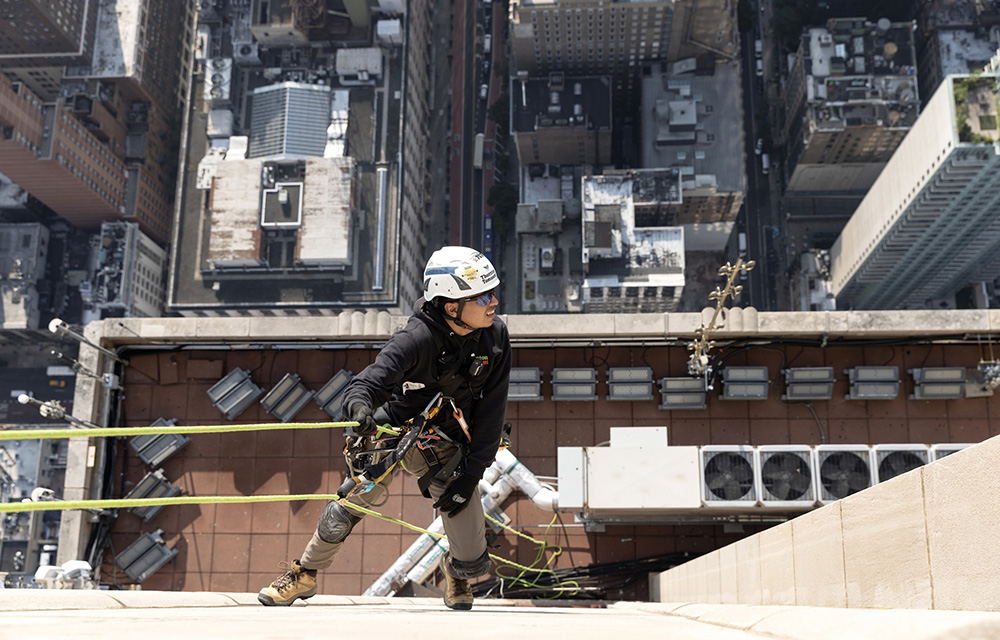News:
Construction Design & Engineering
Posted: November 11, 2014
Making your security system "smarter" and more proactive: Video analytics to deter and prevent
Today, technologies can come together to create systems that are able to work in real-time to offer security that is proactive instead of reactive. Recognizing the security benefits of enhancing the work performed by "fallible" humans with that of "infallible" computer systems, buildings are seeing the value in utilizing advanced technology to make systems more proactive and more intelligent.
Video analytics is no longer just a futuristic concept. It enables today's systems to detect abnormal activity within a particular "scene." The scene is analyzed continuously and "abnormal" behavior that differs from what typically occurs in the scene is detected and triggers an alert. A set of specific criteria is defined and programmed into the system so any activity occurring that is outside of the norm triggers an alert. For example, it can be used to catch urban artists from spreading graffiti, detect those loitering or lingering while smoking, drinking or talking. The system is also uniquely capable of detecting aggressive behavior, thus catching incidents before they escalate into violence. By defining normal/baseline criteria, the system can detect any abnormal conditions and enable appropriate response.
Analytics to
Deter and Prevent
Video analytics, in concert with remote monitoring, is a powerful deterrent and prevention tool for buildings. Analytics can help leverage your video surveillance system to alert safety personnel for early notification and the opportunity to investigate suspicious incidents or avert emergencies before they escalate for a more accurate response.
Mobility - the not-so-distant future of analytics. The ability to remotely view camera views or to receive video clips of alarms triggered by motion detection or other analytics is nothing new. However, now with the advancement of video distribution via smartphones, tablets and other mobile devices, tech-obsessed consumers are able to access real-time event reporting, view images or video from mobile devices and much more. As this on-the-go intelligence advances it will enable building managers and owners to stay connected to their buildings while out of the office.
Analytics and Surveillance
Working Together
Even the most advanced security system is only as good as the capabilities of those doing the monitoring. Even the most skilled operator is still human and thus not able to view every frame of every camera and stay alert and detect activity indefinitely. That's where video analytics comes in to play. Properly implemented, video analytics can assist monitoring personnel by detecting unwanted behavior (i.e. unattended packages, piggybacking risks or unscreened entry into a building) and alerting operators of a situation before it escalates.
Buildings had been reluctant to wholeheartedly embrace the concept of complete replacement of humans with technology - and for good reason. Without properly defining the specific criteria of what is "normal" the system will detect everything or, conversely, can fail to alert if cameras are not properly positioned. That is why combining technology with the "human side" is key. Each response is different. In the event of an alert, an operator at the monitoring station examines the situation and analyzes it in real-time to determine the best course of action - versus allowing the computer to make that call.
For example, by integrating analytics with remote monitoring, Virtual Doorman enables surveillance systems to work much more effectively to deter and prevent incidents. Simply put, the technology makes the difference - the people make it better. Highly-skilled operators remotely interact with cameras on premises to make educated determination as to the most appropriate course of action. The marriage of remote monitoring and video analytics makes sense for today's buildings. Using video analytics affords operators the ability to view more and provide better security. Building owners and managers now realize that technology can be used to supplement tasks that had traditionally been done only by humans.
With so many luxury residential developments underway in New York City today, developers are increasingly challenged with meeting the needs of the most discriminating buyers who demand the utmost in security and convenience. With Virtual Doorman, developers can now offer security that is virtually foolproof thanks to the addition of video analytics.
First to provide 24/7 doorman services from an off-site command center 90% more cost-efficiently than humanly possible, Virtual Doorman is the originator of the fast-growing remote doorman business and remains the industry's dominant force. As New York City's Busiest Doorman, we are now opening doors for more than 13,000 residents in 250 buildings - more every week and is expanding nationwide. With innovations like the industry's only Internet Web Portal and Mobile Application, only Virtual Doorman allows building residents to remotely manage their preferences and provide specific instructions from wherever they are Âby simply using a computer or mobile device.
Colin Foster is a partner and vice president of sales at Virtual Service, New York, N.Y.
MORE FROM Construction Design & Engineering
NYC mayor and DOB release comprehensive façade inspection and safety study conducted by Thornton Tomasetti
Manhattan, NY New York City mayor Eric Adams and New York City Department of Buildings (DOB) commissioner Jimmy Oddo released the full recommendations from a comprehensive engineering study conducted by global engineering firm Thornton Tomasetti








.gif)
.jpg)
.gif)
.gif)